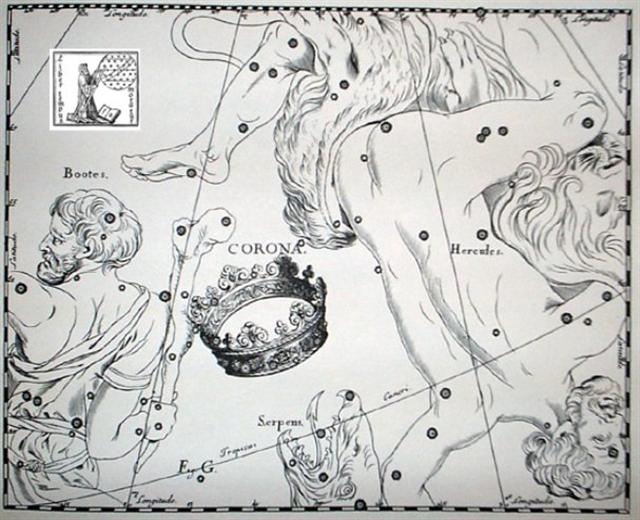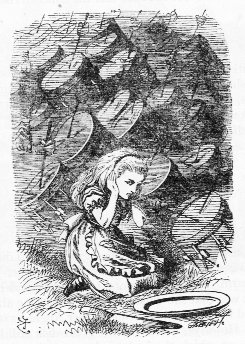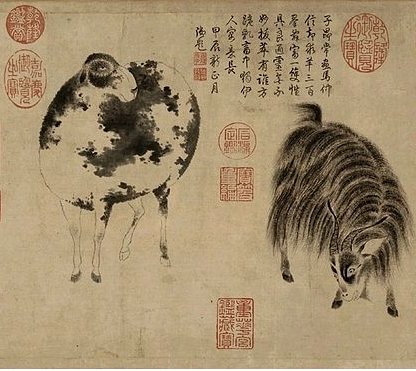12-3. Thus, at Eb3-16 and according
to my suggestions Sirius should have been visible at the Full
Moon in December 30 (364). From where we can see that 475 at the
end of line Eb4 equals 395 + 16 + 64, where 16 could represent
those 16 nights when the rays from the rising Sun in principle would make
star observations impossible and where 64 could represent the
extrapolated precessional distance down to the Golden Age of the Bull (and
with 16 + 64 = 80 corresponding to the day for the Gregorian spring equionox
at 0h):
|
a1 |
32 |
32 |
b1 |
42 |
368 |
|
a2 |
33 |
65 |
b2 |
27 |
395 |
|
a3 |
35 |
100 |
b3 |
16 |
411 |
|
22 |
433 |
|
a4 |
36 |
136 |
b4 |
42 |
475 |
|
a5 |
42 |
178 |
b5 |
35 |
510 |
|
a6 |
39 |
217 |
b6 |
36 |
546 |
|
a7 |
39 |
256 |
b7 |
42 |
588 |
|
a8 |
4 |
260 |
b8 |
40 |
314 * 2 = 628 |
|
9 * 29 |
|
30 |
290 |
|
a9 |
36 |
326 |
sum total |
260 * 2 + 108
260 +
368 = 314 * 2 |
|
sum |
260 + 66 |
This perception is in a way confirmed by the following
number sequence
35, 36, 42 which we have seen also for the 3 lines Ea3--5.
|
Dec 23 (314 / 2) |
24 |
25 |
26 (360) |
 |
 |
 |
 |
|
Eb3-9 |
Eb3-10 |
Eb3-11 (80) |
Eb3-12 |
|
e
tagata aro ki te rima |
tarai
hia te vae o te
vaka |
te
ragi |
rima
hakarava hia |
|
Aro. Face, front, side (of a figure); ki
te aro o ..., to the front of ... Vanaga. Presence, body,
frontispiece; ki te aro, face to face. P Pau.: aroga,
the visage; ki te aroga, opposite. Mgv.: aro,
presence, before; i te aro, in the presence of. Mq.: aó,
face, in the presence of, before. Ta.: aro, face, front,
presence, view. It is probable that more than one word is confounded
in alo. The significations which appear in Southeast
Polynesia are most likely derived from a Tongafiti alo and do
not appear in Nuclear Polynesia. The alo belly and alo
chief which do occur in Nuclear Polynesia are also probably
Tongafiti, for in Samoa and Tonga they are honorific and applied
only to folk of rank, a good indication of borrowing by the
Proto-Samoans from Tongafiti masters. Churchill. In the Hawaiian
group, the western portion or side of an island was called 'the
front', ke alo, of the land, and the eastern side was called
'the back', ke kua. The reason of such designations must be
sought in the fact of the arrival of the inhabitants from the west.
Fornander.
Tarai. 1.
Deluge, sound of water; ua tarai, a smart shower. 2.
To carve, to square, to rough-hew, to shape; taraia,
rough-hewn. P Pau.: tarai, to cut, to hew, to carve. Mgv.:
tarai, to rough-hew, to carve. Mq.: taái, to cut, to
rough-hew, to work wood or stone. Ta.: tarai, to cut, to
fashion. Churchill. Sa.: talai, to adze. To.: talai,
to smooth off rough edges. Fu.: talai, to cut off knots or
thorns ... Churchill 2. |
|
FURUD = ζ Canis Majoris
(94.9) |
Well-22 (Tapir)
/
Arkū-sha-pu-u-mash-mashu-8
(Back of the Mouth of the Twins)
δ
Columbae (95.2),
TEJAT
POSTERIOR = μ
Gemini, MIRZAM (The Roarer) =
β
Canis Majoris (95.4),
CANOPUS
(Canopy) = α
Carinae
(95.6),
ε
Monocerotis (95.7),
ψ1
Aurigae (95.9)
*54.0 = *95.4 - *41.4 |
No
star listed (96) |
β
Monocerotis, ν Gemini (97.0) |
|
June 23 |
24 (175) |
25 |
26 |
|
Dec 27 |
28 |
29 |
30 (364) |
 |
 |
 |
 |
|
Eb3-13 |
Eb3-14 |
Eb3-15 |
Eb3-16 (85) |
|
kua tua te vaivai |
rima |
kua tuo te tino |
te
rima - te kihikihi |
|
Vaivai,
weak. PS Mq.: vaivai,
soft, pleasant, agreeable. Sa., To.:
vaivai, weak. Pau.:
Hakavaivai, to delay. Ta.:
vaivai, to rest a bit. Mq.: vaivai, to dilute,
to thin. Ha.: waliwali, soft, pasty. Churchill.
Tuo.
Mgv.: tuo, to speak long without an answer. Ta.: tuo,
to cry out loudly. Ha.: kuo, to cry with a loud voice.
Churchill.
Tino. 1.
Belly (as reported by a Spaniard in 1770). 2. Genitalia (modern
usage). 3. Trunk (of a tree), keel (of a boat); tino maîka,
banana trunk; tino vaka, keel. Vanaga. Body, matter; mea
tino, material; tino kore, incorporeal. P Pau.: tino,
a matter, a subject. Mgv.: tino, the body, trunk. Mq.:
tino, nino, the body. Ta.: tino, id. Churchill. |
|
No
star listed (98) |
Aurigae (99.4), ψ2 Aurigae (99.5)
GEMMA (α
Cor. Bor.) |
ψ4
Aurigae (100.5),
MEBSUTA (Outstretched) = ε Gemini
(100.7) |
SIRIUS = α Canis
Majoris
(101.2), ψ5 Aurigae
(101.4), ν Gemini (101.6), ψ6 Aurigae (101.7)
*60.0 = *101.4 - *41.4 |
|
... In other words, the ancient
Druidic religion based on the oak-cult will be swept away by
Christianity and the door - the god Llyr
- will languish forgotten in the Castle of Arianrhod, the Corona
Borealis. This helps us to understand the relationship at Rome
of Janus and the White Goddess Cardea who is ... the Goddess of
Hinges who came to Rome from Alba Longa. She was the hinge on which
the year swung - the ancient Latin, not the Etruscan year - and her
importance as such is recorded in the Latin adjective cardinalis
- as we say in English 'of cardinal importance - which was also
applied to the four main winds; for winds were considered as under
the sole direction of the Great Goddess until Classical times
...
 |
|
June 27 |
28 |
29 |
30
(181) |
 |
 |
 |
|
Eb3-17 |
Eb3-18 (14 * 29½ = 413) |
Eb3-19 (88,
414) |
|
kua moe - kua reva te ika |
tama - reva ika |
kiore - henua |
|
Reva.
To hang down; flag, banner.
Revareva, 1. To be hanging vertically; to
detach oneself from the background of the
landscape, such a person standing on top of a
hill: ku-revareva-á te tagata i ruga i te
maúga. 2. To cast itself, to project itself
(of shadows); revareva-á te kohu o te miro i
te maeha o te mahina, the shadow of the tree
casts itself in the light of the moon. 3. Uvula.
Vanaga. To hang, to suspend, flag, banner;
hakareva, to hang up; hakarereva, to
hang up, to balance; hakarevareva, to
wave. T Pau.: reva, a flag;
fakarevareva, to hang up, to suspend. Mgv.:
reva, a flag, a signal. Mq.: éva,
to hang up, to be suspended, to wave a signal.
Ta.: reva, a flag, banner; revareva,
to wave. The germ sense is that of being
suspended ... any light object hung up in the
island air under the steady tradewind will
flutter; therefore the specification involved in
the wave sense is no more than normal
observation. Churchill. Mgv.: 1. A plant. Ta.:
reva, id. Mq.: eva, id. Sa.:
leva, id. Ma.: rewa-rewa, id. 2. To
cross, to pass across quickly; revaga,
departure. Ta.: reva, to go away, to
depart. Ma.: reva, to get under way.
Churchill. Ta.: The firmanent, atmosphere. Ha.:
lewa, the upper regions of the air,
atmosphere, the visible heavens. Churchill. |
|
VISIBLE CLOSE TO THE FULL MOON: |
|
July 1 (118 +
64) |
ALHENA (γ Gemini) |
3 (184 → 414
- 230) |
 |
|
APRIL 28 (118
→ 4 * 29½) |
29 |
30 |
Here the star named Revati
(ζ Piscium, *16) might have influenced Metoro:
|
PISCES: |
|
28 |
Revati
prosperous |
ζ Piscium
Revati |
Fish or a
pair of fish, drum |
April 6 (96,
461) |
 |
Ti. 1.
Liliacea (Cordyline fruticosa); its long, thick
root, cooked in the earth oven, is deliciously sweet. 2.
To bend down to allow someone to climb on one's back to
be carried (haha); he-ti-atu a Kaiga i te tua
ivi, he-haha-mai Huri Avai, Kaiga bent his back and
Huri Avai climbed on his shoulders. Vanaga. 1.
Dracæna. P Mgv., Mq.,
Ta.: ti, id.
2. Tea. Churchill.

... Teke said to Oti, 'Send the men [ka unga te
tangata] for banana shoots. They shall take all
kinds of banana shoots [anakeanake.te huru o te maika]
from my banana plantation, also taro, all kinds of taro,
furthermore ti (Cordyline fruticosa) and kape (Alocasia
macrorrhiza).' Oti and all
his assistants went away, arrived, and took some of
the banana shoots as well as taro, ti, and kape.
[E:67]
... Ti
by lying with Tattooing made
the ti plant (he
ti ki ai ki roto ki a he ta ka pu te ti). Burnt
ti leaves were used to produce the black dye for
tattooing
...
Notably the
strange double pair of glyphs
(→ 'Double Double', ε Lyrae) at the end of line Ea7 and
the beginning of line Ea8 could correspond to the
strange double pair of
pages E:68--69.
 |
 |
*241 |
 |
 |
|
Ba4-26 (150) |
Ba4-27 |
Ea2-13 (45) |
Ea2-14 |
|
Oct 31 (304
→
364 -
60) |
Nov 1 |
June 29 |
30 (181) |
|
ZUBEN ELGENUBI |
KOCHAB |
MEBSUTA |
SIRIUS (*101.2) |
|
May 1 |
2 |
Dec 29 |
30 (364) |
|
BHARANI (*41.4) |
GREAT MOUND |
DOUBLE DOUBLE |
Φ SAGITTARII (*284.0) |
|
*245 → 490 / 2 → 5 * 49 → 35 weeks → 290 / 2 +
100 |

|











